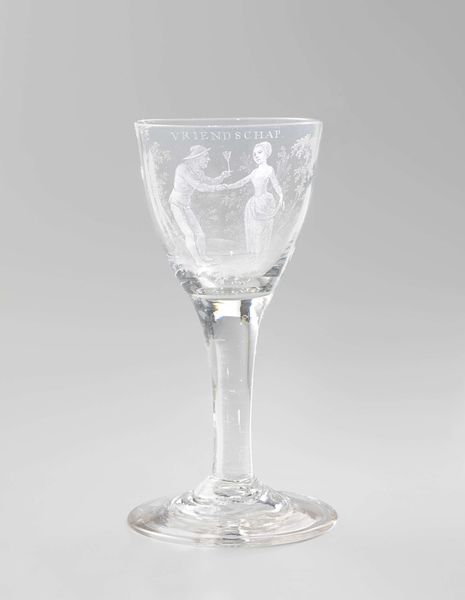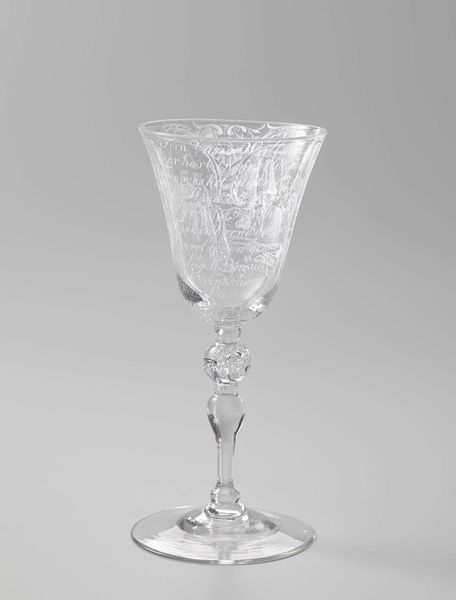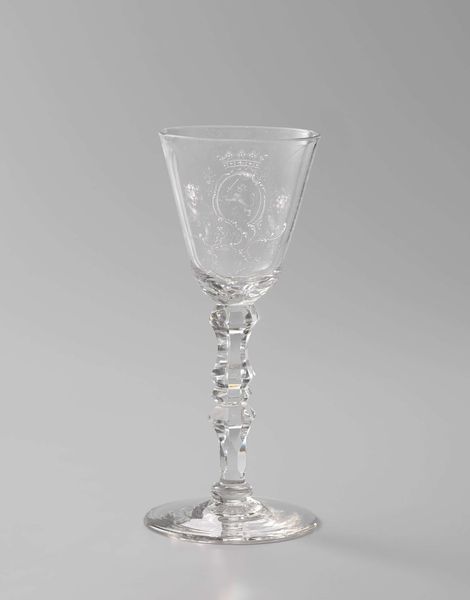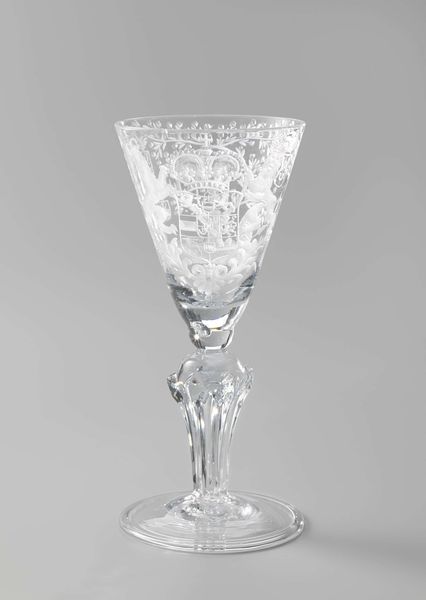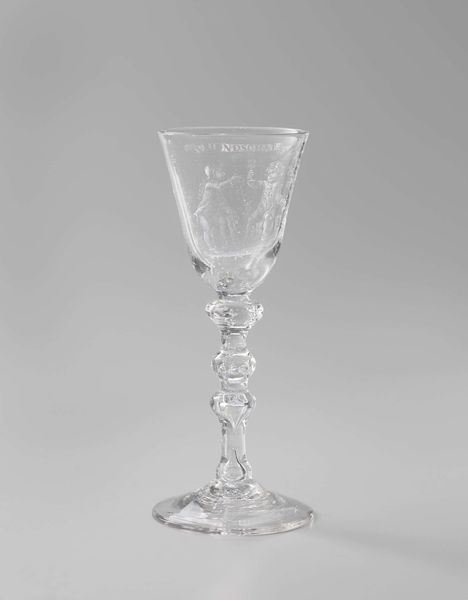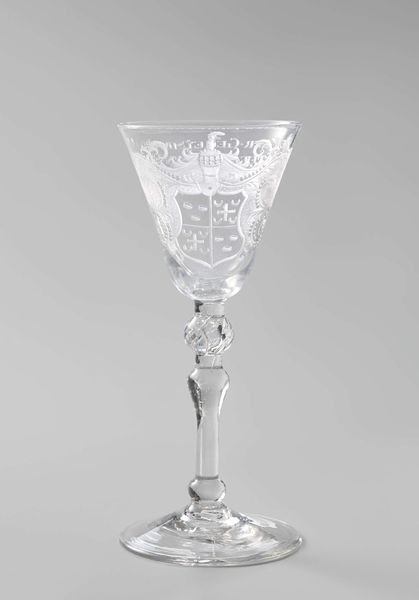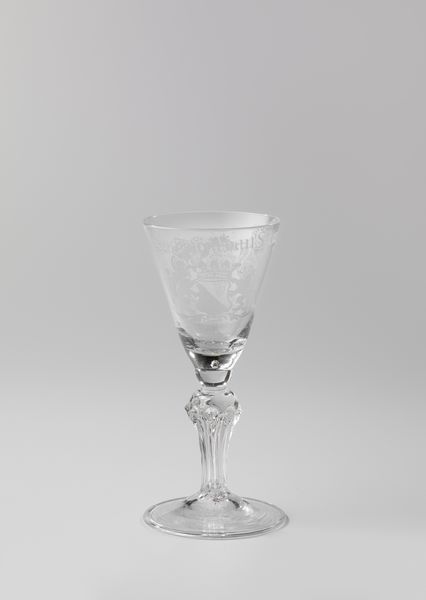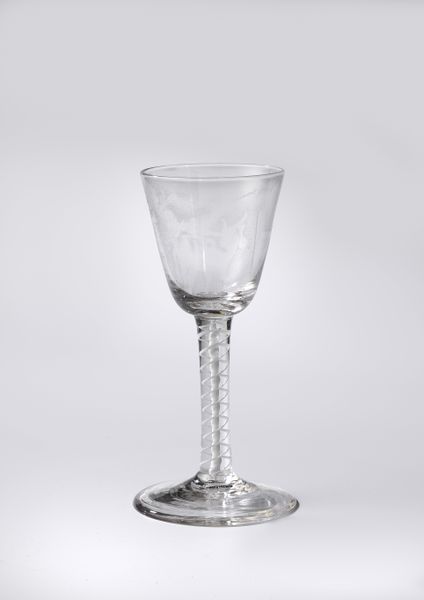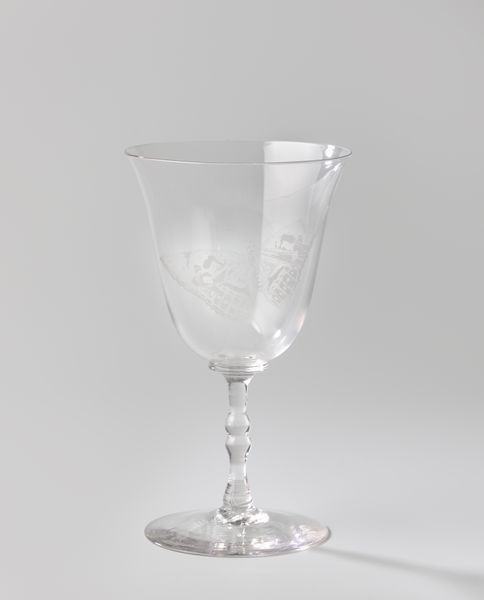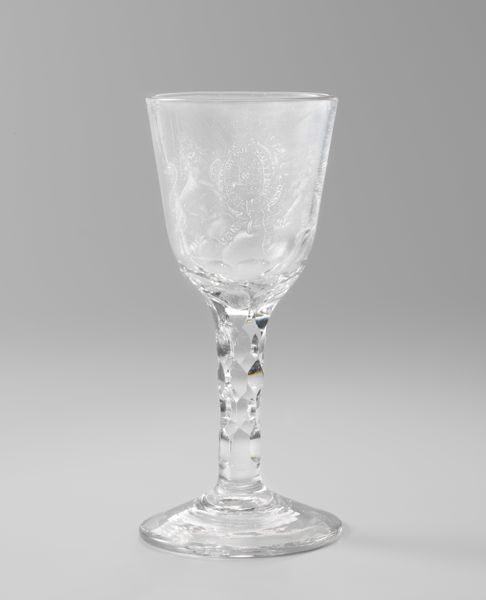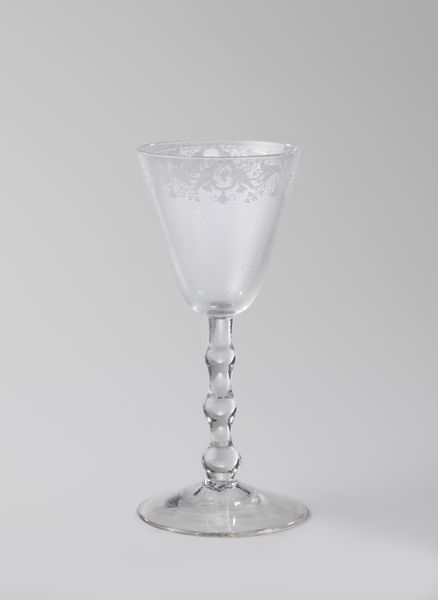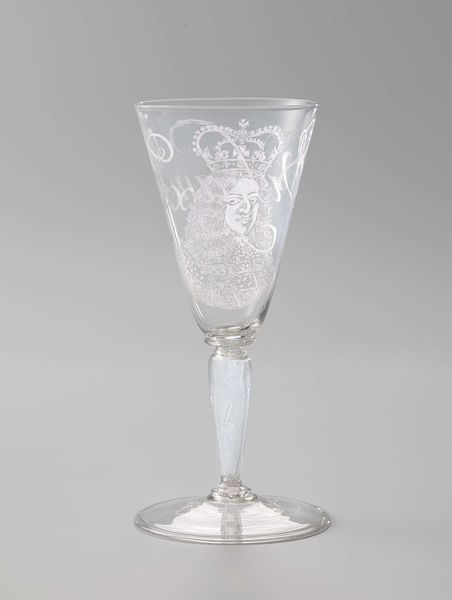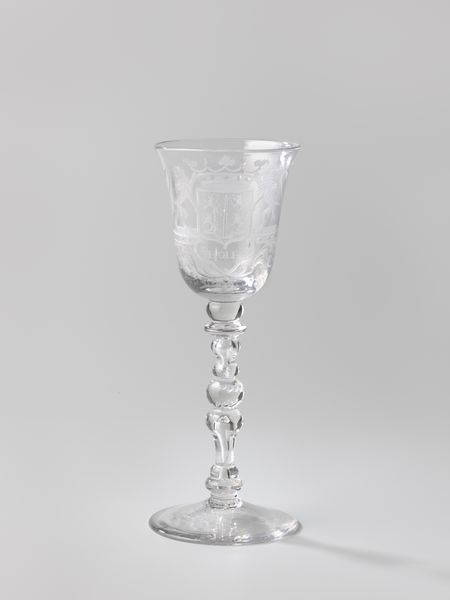
Dimensions: height 18.6 cm, diameter 8 cm
Copyright: Rijks Museum: Open Domain
Curator: Here we have a delightful example of 18th-century glasswork. It’s a Kelkglas, meaning goblet in Dutch, and dates from around 1770 to 1780. The craftsmanship is just lovely. Editor: It's ethereal! Almost looks like spun moonlight. The clarity of the glass coupled with that delicate etching gives it a dreamy, weightless quality. What's the story behind the imagery? Curator: The goblet features two putti, or cherubic figures, floating on clouds. One is armed with a bow and arrow, a clear reference to Cupid. Editor: Cupid. Immediately the symbolic association with love, desire, perhaps even vulnerability springs to mind. Considering the time it was made, do you think it could have functioned as some kind of commentary, whether overt or hidden, on the evolving conceptions of love, perhaps reflecting or resisting some aspect of traditional morality or arranged marriage? Curator: It's possible. Goblets like these often served ceremonial or celebratory purposes, but they also functioned as declarations. Cupid's presence certainly hints at romantic love, which, at the time, was gaining prominence as a basis for marriage, challenging older systems based on family or social status. But also remember that in the broader scope of Christian art, putti appear not merely as symbols of profane love, but of divine love too. Editor: That's true. I find myself wondering, though, about the socio-economic context of its use. Was this glassware for everyday usage? Was it just something displayed by wealthy merchants and aristocracy, something purely decorative? Did it circulate as dowry for women and act as some form of social and capital currency? How might those histories inflect how it might've been received in various communities and subcultures at the time? Curator: While we may never know its complete individual trajectory, the object certainly reveals its context: Glassmaking like this was quite refined. The aristocracy or affluent middle classes most likely possessed it. Beyond display, it would grace celebratory tables during banquets or feasts, or at special rituals such as betrothals and wedding feasts, cementing familial ties. Editor: Fascinating. Objects often tell so many stories far beyond what's immediately visible. Looking closer reminds me that, as artworks, objects also engage and reflect socio-political movements of any particular historical moment in complex and diverse ways. Curator: Indeed. And studying those objects helps us better comprehend the period's cultural codes, the dreams and struggles that continue to resonate into the present day.
Comments
No comments
Be the first to comment and join the conversation on the ultimate creative platform.
